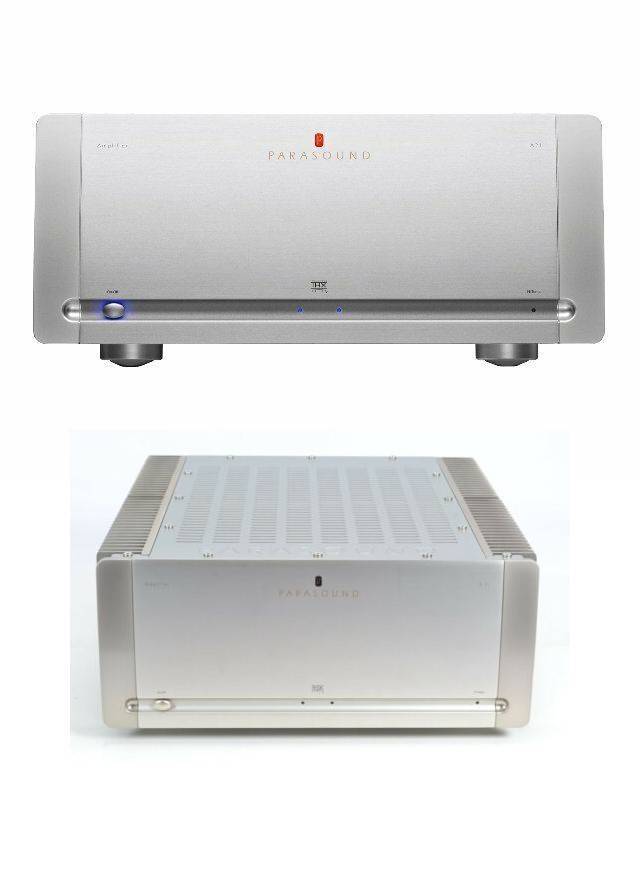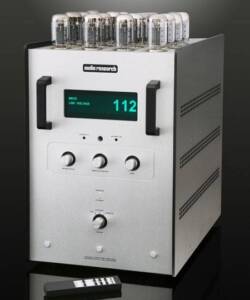Parasound Halo A21 Stereo Power amplifier
Original price was: R120,000.00.R38,000.00Current price is: R38,000.00.
Better known for multichannel, the A21 demonstrates that Parasound knows a thing or two about stereo too

As with Canada’s Anthem electronics, San Francisco’s Parasound components are often found powering luxurious multichannel ‘home theatre’ systems. Unlike Anthem, however, Parasound does make pure audio (as well as AV) preamps to partner some of its power amps, especially its two-channel models.
Designed in the US by John Curl, a veteran whose CV includes classic Mark Levinson and Vendetta designs in years gone by, Parasound’s amps are outsourced to Taiwan for manufacture – which might explain the keen pricing. This A21 power amp from the flagship Halo range suggests a lot for the money, weighing 27kg and resplendent in classy casework.
Its Class A input and driver stages employ JFETs and MOSFETs, while the Class A/B output stage uses 16 bipolar transistors, four pairs for each channel. The power supply features an encapsulated 1.2kVA toroidal transformer with independent secondary windings for each channel and four 25,000μF Elna capacitors. The design is direct coupled and includes DC servo and relay protection circuits. The A21 is also THX Ultra2 certified – not, I suspect, that you’d care one jot. But you might care about the A21’s greedy 149W power consumption at idle! Signal-sensing auto power on/off, in addition to 12V triggering, is a welcome inclusion.
A CLASS ACT
Its luxurious appearance is more than skin deep. Parasound’s A21 dispensed truly sumptuous sound from Maxwell’s ‘Everwanting…’ with oodles of bass grunt and tight precision. The singer’s soulful multi-tracked vocal lines were depicted exquisitely within the track’s myriad percussion details. Demonstrating the control and grip of the Bryston and Anthem but with the velvety midband richness of the ATC, the Parasound’s ability to resolve detail, while remaining composed and easy on the ear, proved the equal of my ‘reference’ Levinson amplifier.
Where the amplifier showed its true prowess was with the challenging live orchestral recording of ‘Ride Of The Valkyries’, the light and shade of the orchestra sounding smooth and silky, or glossy and vibrant, as the piece demanded. Similarly it was unfazed by the thick production of the Robert Plant track, remaining clear and open throughout. Norway’s Trondheim Soloists were wonderfully real, 2L’s supreme fidelity made clearly abundant thanks to the A21’s transparency to the source.
Listening
I had lived with my previous Parasound amps through almost eight years and three preamps so my “aural memory” of the amps was pretty well ingrained into my brain.
I devised a listening plan. That plan was to include mostly music in stereo with some in 5.1 surround sound (SACD and Blu-Ray Audio) thrown in for reference. For at least the first part of the listening experiment I would turn-off the subwoofers and run front Right/Left channel speakers full range in the Marantz “Pure Direct” mode. Any multi-channel later would be run with the Audyssey corrected room EQ engaged. I seldom (read never) use the Audyssey Dynamic EQ. Personally I find the Dynamic EQ sucks the life from music and pumps up the bass in movies so I just don’t use it. To me it removes the “air” from the upper end while making the emphasized low end sound a bit blah… even “cardboardy”. It’s probably just me, or my room so I’m certainly not faulting or criticizing anyone who uses the Dynamic EQ or thinks that it improves the sound. I much prefer just turning it up a bit to improve the dynamics and overall sound (it is the aging “rocker” in me I guess!). Back “in the day” I never used the “Loudness” button either. And, certainly there was no such thing on the mixing consoles or playback systems we used in the studio.
I gathered some material I am very familiar with and started listening.
1. Harlequin (1985) – Dave Grusin and Lee Ritenour – CD – Harlequin is a great collaboration between pianist Dave Grusin and guitarist Lee Ritenour. One of the things that sets Harlequin apart was the recording process was 100% digital (between the microphones and the speakers of course 🙂 there is a great balanced sound and some nice “air” around all instruments. A great example of a digital recording done right!
2. A Decade of Steely Dan (compilation) – Steely Dan – CD – Long time, reference quality studio sound source!
3. Let It Roll (1988) – Little Feat – CD – A very well recorded album of Little Feat proving these were a very talented group of musicians who were still putting out great music well after the death of Lowell George.
4. Another Mind (2003) – Hiromi – SACD – Debut studio album of powerhouse “Jazz” pianist Hiromi Uehara. Lots of range and fantastic support players.
5. The Raven That Refused To Sing (2013) – Steven Wilson – Blu-Ray Audio – Steven Wilson as the driving force behind Porcupine Tree, or other bands/collaborations, and as a solo musician is always interesting! He is also a studio wizard who has been the “go-to” mixer/engineer/producer for classic updates and remixes into 5.1 surround. The list of his work and accomplishments is long…. WAY TOO LONG to list here! If interested check it out here…. https://en.wikipedia.org/wiki/Steven_Wilson_discography
I have the greatest respect for his studio prowess!
For this review I won’t get into the nuances of each piece or track played giving you only some overall impressions or where I noticed a difference, if any, between old and new amps.
I started my listening in stereo using the A21 with the subwoofers turned off and the BG 520i’s running full range with the Marantz AV7703 in “Pure Direct” Mode bypassing any EQ, bass management, or crossover points.

My main speakers, the BG Radia 520i’s, have two 6.5” conventional Kevlar woofers in each and don’t dig particularly deep into the bass registers but do have some convincing output down to around 30Hz if not pushed very hard.
I started with Harlequin and listened at a low volume gradually increasing the volume until quite loud. The speakers played quite convincingly at all volumes and I was hearing a definition and solid bass that I had never heard from these speakers before. In the past I had tried listening to my system using the Marantz “Pure Direct” mode but had always fallen back to the “Direct” or “Stereo” because either of those modes use the subwoofers in the mix. The biggest shortcoming of the BG 520i, I had thought, was the low end. But here I was listening to a solid, substantial, and articulate bass with no subs in the mix. I proceeded to my other music selections and found that the seemingly lost bass appeared to have been found. All selections were much more listenable. With my old amps the bass always seemed not only absent, but “Boxy” or even “cardboardy” and the bass was not well defined. Definitely not the case with the new Halo A21!
And it wasn’t just the bass…. The high end was the same smooth extended high end that I remembered and expected from my older amps, but more…. More perceived “Air” and at the same time more body across the midrange and the high end. The sound stage seemed deeper and more extended to the sides as well without ever losing the center anchor or the distinct positioning and separation of the instruments.
I fact, the more I listened the more instruments presented themselves to me. And the subtle nuances of some of those instruments were now audible. An example came from material I have listened to many times, on many different systems, over the years…. Steely Dan’s Babylon Sister and Bodhisattva and others revealed subtle percussion touches that I had never heard before. I could clearly hear now a Cabasa being played and the subtle high-hat work became much more clear. Donald Fagen’s electric piano had a pronounced tremolo that had gone unheard over many listening’s throughout the years and was now clearly audible.
I couldn’t quite believe it so I kept adding new material to the mix…. Picture Book from Simply Red, George Thorogood and the Destroyers, Yes, Three Dog Night, King Crimson, Sade, Led Zeppelin, Rod Argent and Colin Blunstone… each play by each different artist revealed something I had not heard before.
I turned the subs back on and listened again, and yes, the subs improved the sound by digging deeper and providing that firm foundation for the music to build on and increasing both the richness and dynamic impact of the sound in every case. But new to this scenario as it played out was the fact that the subs did not have to be on to enjoy the music!
When I finally got to the SACD and Blu-Ray Audio material I did a quick listen with subwoofer/no subwoofer and found that the 520i’s continued to supply a surprisingly good overall sound even without the subs engaged. Surround sound was very detailed with the discs that featured 5.1 mixes.
Award: Two-Channel Power Amplifier
Parasound Halo A 21
For those who desire the power of a Mack truck with the finesse of a Mercedes Benz in a two-channel amplifier, look no further than Parasound. The A 21 has a solid foundation with a power supply consisting of a 1.2 kVa transformer and 100,000uf filter banks, pelting out 250wpc into 8 ohms and 400wpc into 4 ohms for both channels. Our bench tests confirmed that this is one solid contender. This is no surprise considering its THX Ultra2 certification. With the assortment of unbalanced and balanced inputs, triggered output, and ground lift option no stones were left unturned with this well built, attractive design.

Description
Continuous power output:
250 watts RMS x 2, 20 Hz – 20 kHz, 8 Ω, all channels driven
400 watts RMS x 2, 20 Hz – 20 kHz, 4 Ω, all channels driven
750 watts RMS x 1, 20 Hz – 20 kHz, 8 Ω
Current capacity:
60 amperes peak per channel
Power bandwidth:
5 Hz – 100 kHz, +0/-3 dB at 1 watt
Total harmonic distortion:
< 0.2 % at full powe
IM distortion: balanced 16 V rms< 0.04 %
Slew rate:
> 130 V/µsecond
Dynamic headroom:
> 1.5 dB
Interchannel crosstalk:
> 80 dB at 1 kHz;
> 63 dB at 20 kHz
Input sensitivity:
1 V for 28.28 V, THX Reference Level
Input impedance:
33 k Ω unbalanced; 66 k Ω balanced
S/N ratio:
112 dB, input shorted, IHF A-weighted
Damping factor:
> 1100 at 20 Hz





